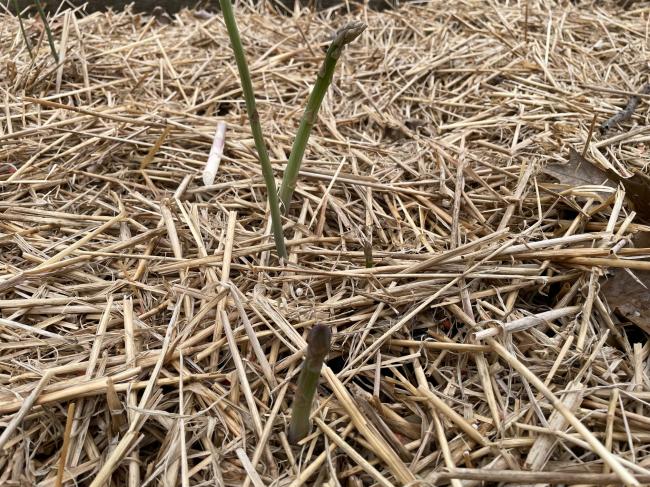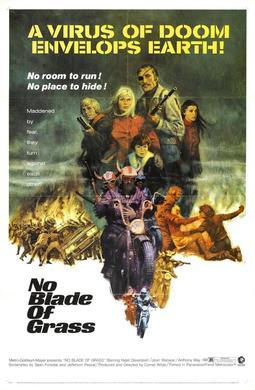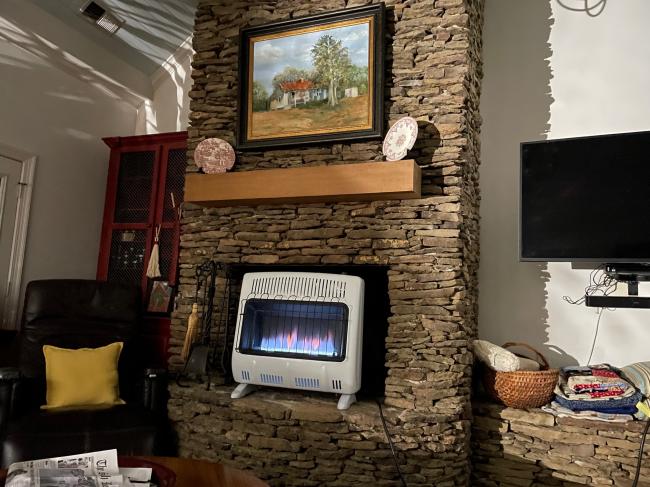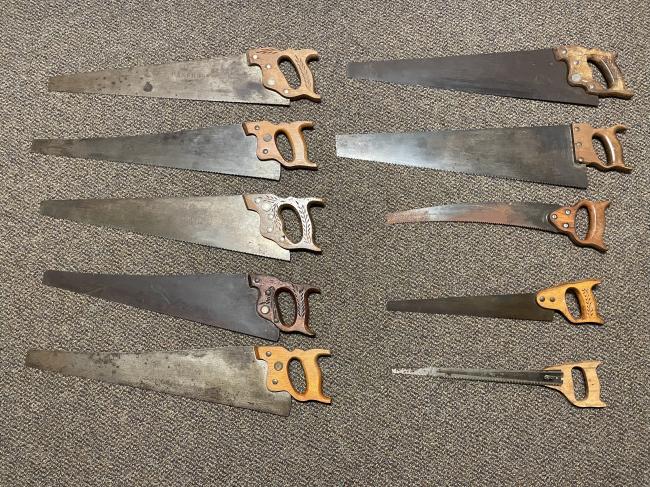Share your knowledge & learn from experts
Because prepping and community go hand in hand
News for the week 2023-04-24
Make a top-level comment for a new story/topic. Discussions about the topic should be in the replies to the top-level comment. That way things stay organized and every main comment as you scroll down is a different piece of news.
Read MoreGarden Pics
Anyone else started their garden yet? So far I am harvesting asparagus and will be soon picking collard greens. My tomatoes are in and growing fast and today I planted my sweet corn. The blackberries are leafing out now and should bloom pretty soon. Down in the orchard the blueberries have finished blooming and most apple trees are in bloom. The muscadines are just now waking up.
This winter I setup the mesh trellis and will grow my pole beans there. I’ll be planting them on those 3 rows soon. Once it gets a bit warmer, I’m gonna grow red noodle beans on the old wire trellis. I’ve never grown them but they are supposed to love very hot weather. As our planet warms, I’m experimenting with varieties that can handle temps that stay up near 100. These beans are actually related to cowpeas, such as black eyed peas and purple hull peas, but their pods, which can grow 2 -3 feet long, are edible and have no strings. They go by lots of names, such as yard long beans, asparagus beans, etc.
Read More
Best safety practices for handling fallen power lines obstructing roads following an outage (power off)
Standard advice (understandably) is never touch a power line, no matter the circumstances.
However, many people following big storms, like the ones in Northern California that downed a lot of lines just yesterday, do in fact handle dead lines to clear them from the road so they can get somewhere they need to go.
I imagine the best practice is to hold tight if possible and not attempt any handling, even if you feel certain the lines are dead.
But if there is an emergency, and a person did have to move/cut/etc dead (or live) power lines, are there any guides on best practices?
Both advice during outages where the lines are dead, as well as live wire situations, are welcome. Thanks.
Read MoreReminder – April 23rd 3pm (1500 local) Alert test by the UK government
Reminder – April 23rd 3pm (1500 local)
Alert test by the UK government
https://www.bbc.co.uk/newsround/65026368
https://www.gov.uk/alerts
Read MoreMilitary surplus: Favorite online sources and items
Question for the group:
While I recognize that there are limitations to military surplus items (tend to be heavier, can attract unwanted attention, govt purchases from the lowest bidder, etc.), I’ve been considering them for longer-term preparedness. In other words, I have my premium/lightweight items for bugging out and my heavier more durable items for bugging-in/homestead cache, etc.. Military surplus seems to be a good mix of durable, inexpensive, and quality enough for the military to use them.
Any particular favorite online surplus stores and/or items that you all have added to your stash (or milsurp items that you AVOID)?
Read MoreNews for the week 2023-04-17
Make a top-level comment for a new story/topic. Discussions about the topic should be in the replies to the top-level comment. That way things stay organized and every main comment as you scroll down is a different piece of news.
Read MoreNews for the week 2023-04-10
Make a top-level comment for a new story/topic. Discussions about the topic should be in the replies to the top-level comment. That way things stay organized and every main comment as you scroll down is a different piece of news.
Read MoreRealistic knife defense against 100% resistance.
https://www.youtube.com/watch?v=TxIyeFBmsOY
The video was approved and uploaded by the official Combat Sambo Federation:

News for week of 2023-04-03
Make a top-level comment for a new story/topic. Discussions about the topic should be in the replies to the top-level comment. That way things stay organized and every main comment as you scroll down is a different piece of news.
Read MoreShould I stay in the military to be more stable against an economic collapse?
Hello everyone.
Before I get to my question, a little bit about me for context.
I’m currently serving in the military, stationed in Colorado, and will separate from the Army pretty soon. I am a single soldier with no dependents living on base in the barracks.
I’m also a new prepper. I’ve been purchasing survival gear, 6 month supply of food, and a few tools for self defense. I’ve also been investing in gold, silver and bitcoin. What I’m prepping for is an economic collapse. I’m not very knowledgeable in the area of economics but for the past year I have been doing some research and consuming content of a few economic experts who have been watching the US economy’s path. Digesting all this information I’ve come to believe this crisis will happen some time this year or next year at the latest.
Which brings me to my question. Should I reenlist in the Army? I do want to go back to civilian life but I wonder if now would be a bad time to do so. Would it be easier to endure a crisis like this as a service member rather than a civilian? There are supposed to be systems in place for this kind of event and its seems there is a widespread belief is that things would start to get back to normal after 6 months of hardship. I have my doubts about it being so short and obviously “normal” is relative. Things wouldn’t be exactly as they were before. The Army always says it takes care of its soldiers and their families. I believe it, along with the government, would try but I have my doubts about that too. The coming crash is supposed to be REALLY bad. Will the government/military actually be able to pay/care for its service members during this time? I think back to what I know about the great depression. Before WW2 it had been going on for 10 years and had no end in sight due in large part the government trying to manage it but doing so poorly. I understand this isn’t the same country it was back them but it reminds of the saying “never underestimate how badly politicians can screw things up”.
So which would be better? Reenlist in the Army and rely on it to help me through or should I become a civilian and link up with the local prepper community for assistance? Thoughts?
Read MoreTest your gear and run scenarios in advance of a real emergency
I used the recent power outages as a dress rehearsal of sorts and it was a good thing. I have not yet had the proper electrical corrections installed for a direct hookup for the generator. Cost and time just hasn’t been there until now. So….I had to run extension cords to power the basic necessities. Ran into a couple of minor issues I’ll have to sort out but we had lights & refrigeration while most of my neighbors didn’t. For the new-to-prepping, don’t just assume that the stash of stuff in your basement/garage/shelter will do the trick when the time comes. PLAY WITH IT! Do those dry runs in advance. You may be surprised what you run into that hadn’t been considered during planning.
Read MoreChecking/refilling my 5-gallon jugs
Hey all. About ten months ago, I filled up a handful of 5-gallon Sceptor water jugs. This was my first foray into long-term water storage.
I was advised at the time that I should periodically empty and refill these jugs with fresh water. How often do you y’all do this? 6 months? A year?
Also, for the first time today, I tasted some of the water I’ve been storing. It has a very mild plastic-y flavor to it. Very drinkable otherwise. Is this normal? What should I be checking for to make sure that my first efforts to store water were “proper”? I’m trying to avoid a situation where the worst-case scenario happens and I only find out then that my preparations were bad.
If it’s helpful, here are the high-level steps I followed when I originally filled these last year:
– Rinsed them thoroughly inside with warm water and dish soap
– Filled each 5-gallon jug with water and about 1.5-2ml of bleach. Let sit for 15 minutes. Flip, let sit for 15 more.
– Dumped out the bleach water, rinsed it really good
– Filled with tap water
– Screwed on caps tightly. Stored in a cool, dark place
Would you recommend that when I empty the jugs to fill them fresh, I repeat all of the steps above? Or is a simpler process ok after the first time?
Read MoreCERT Training
I went through CERT training in early 2019, but seems like folks went their separate ways afterwards and the local EMA sponsor lost interest. There’s a number of CERT teams in our area according to the FEMA CERT website, but a random phone call to the numbers listed result in either “no longer in service” or “we don’t do that anymore.”
If you’ve been through CERT training, what was your experience afterwards? Is your group still active?
Read MoreHow often do you run your portable generator?
For those who have portable generators, how often do you run them?
I have 2 generators that I run for 30 minutes once a month that coincides with the monthly siren test on the first Saturday of the month. I also run one of the generators to power the whole house for 30 minutes twice a year. I have an interlock setup versus a transfer switch so I can select which circuits I want to power.
Read MoreSurvival movies
Set out on a quest today…to watch a whole list of “survival movies”….movies where the end of the world has come or is threatened and people are trying to survive. I’ve seen “Panic is year zero” many years ago, not bad, “The Road” which was shot here locally, “On the Beach”, “Red Dawn” and a few others. Today’s movie was “No blade of grass”, a completely terrible 1970 movie shot in Great Britain on budget of about $8. In its day, it was controversial because it had an explicit and long rape scene. What a stinker! Wish someone would make a movie out of “Alas Babylon”. What’s your favorite prepper movie?
Read More
Prepper Chat Night – Friday March 17
March prepper chat nights are Friday, March 3rd and 17th at 6pm PST/9pm EST.
And as a reminder, Prepper Chat Nights are on the first and third Friday of every month on Discord by video or voice chat with other members of the community.
Read More
Refrigerator / freezer alarm recommendations
I want to get a fridge/freezer alarm for the two units I have and to get some kind of warning if the power were to be out and temperatures were heating up. That way I could have a little notice to do something about it like hook it up to a generator or pack it in ice to save the food I have in there.
While browsing through Amazon for such a product, I quickly noticed that many have all these fangled settings, displays, functions, and phone apps. I want a simple alarm to go off if the temperature rises above a certain amount, not some 12″X12″ display on my wall that tells the weather and a daily joke.
This one was promising and simple but but reading the reviews it says that the alarm is not very loud and only chirps for a few seconds before turning off. This is a deal breaker for me because I want a constant loud alarm to get my attention as soon as I come home from work and not risk missing it.
Does anyone have an alarm that they recommend?
Read MoreMr. Heater to the rescue again!
Once again, an ice storm moved in this week and I lost power for most of the night. It was late enough that I decided to not run the generator but the house was getting cold. So I brought out my 30,000 BTU LP portable heater, and set it on the hearth. It is ventless and has a carbon monoxide sensor but to be extra safe, I cracked open the flue. Last year, I posted about using this heater and my generator at my mother-in-law’s house. This year it was my turn. It has a thermostat and set on 2 out of 5, it kept the center of the house toasty warm and ran for about 3-4 minutes every 15 minutes. This Mr. Heater is probably the best prepper investment I’ve ever made… and I’ve made a lot. 🙂
So typical of a prepper, I had my generator ready to run if needed. I had both Humless solar generators in use. One was just running a few LED lights and recharging other lights. The other was beside my recliner, keeping my phone fully charged and powering my CPAP. I’m one of those that can not sleep without a CPAP anymore. Without it, I start snoring as soon as I fall asleep and the snoring now wakes me up. So if I’m gonna sleep, I have to power the CPAP. Having solar generators allows me to use such equipment without running the generator. I prefer to not run the generator overnight, while I’m sleeping.
Took this pic from the recliner.
Read More
What dry dog and cat food would you recommend?
What dry dog and cat food have a decent shelf life, and good quality that you would recommend? Not too concerned about canned food, which can last a few years.
Thanks in advance.
Read MoreNews for week of 2023-03-20
Make a top-level comment for a new story/topic. Discussions about the topic should be in the replies to the top-level comment. That way things stay organized and every main comment as you scroll down is a different piece of news.
Read MoreNews for week of 2023-03-27
Make a top-level comment for a new story/topic. Discussions about the topic should be in the replies to the top-level comment. That way things stay organized and every main comment as you scroll down is a different piece of news.
Read MoreSling bag for basic lightweight prepping equipment
Hi guys,
First things first, I am new to prepping and do find this website very useful and by far the most elaborated and well-structured on the topic. Thank you for making prepping easier for people like me. Having said that, I have travelled the world for 6 months with a single bag pack (I will come back on that) and I used to travel a lot for my work; a bit less nowadays. All this to say that I am use to travels and backpacking.
Now comes the interesting bit. The way I see things, my wife and I will keep our least compact and heaviest prepping hardware ready to take off, at home (most of the time) in our backpacks. I have a Kajka 65 – Fjallraven and she takes the Abisko Friluft 45 (both are Fjallraven – have a look at these, they are more mountain types backpack but worth considering for prepping). I had the 65 L Kajka for my 6 months travel and it never disappointed me nor let me down.
For our lightest gear, I would like to invest in one or two sling bags. This is not in line with The Prepared recommendations but we would not use these sling bags for long walks and travel. The idea is to have our lightest gear with us most of the time, to get used to it and try it when possible. We do a lot of offroad driving short walks to discover areas, look for mushrooms, etc. and a sling bag would be perfect to be able to quickly access knife, multitool, the equipment to make fire, water, etc. not shelter and night orientated but really day basic equipment and the gear we want to try to get to know how to use it when we really do not have other choice but to use them.
In terms of sling bag there is a variety of choice and, from what I could see, there is no real good article on the net comparing them against each other’s. I liked the idea of the messenger bag or the satchel near the hip but I think that will not work in the long term. Hence, the sling bag on the back with a secondary strap to maintain it in place (I think this is important). In terms of volume, I do not want nor need much. Again the idea is day trip with light and compact equipment. at the moment I am looking into the following bags and would appreciate any thoughts or guidance:
– Plan B from Hazard 4; it looks good; maybe a bit too big (visual at least).
– Paladin / SOTech Go Sling Bag; I liked this one a lot initially but got to understand that the main compartment is really not what I am looking for.
– Crosshatch Sling Pack from First Tactical; I like this one a lot but understood that the people were disappointed when receiving it, expecting higher grade/quality/finish.
– Sitka Maxpedition; this is also one of my favorite.
– Vanquest Javelin Sling, 2nd Gen; probably my favorite one at the moment.
As I said, I am new to prepping, gearing up gradually and following all the good advice I can get. I like spending time outside, best in the nature. So from all angles, prepping makes sense to me and I want to keep it fun and enjoyable.
Thank you all for reading me and looking forward to your feedbacks.
Cheers, Mathieu
Read MoreOld hand saw restoration guide
In preparation to restore some old hand saws, I assemble a guide drawing on multiple sources. I was motivated to do this as sources that I read disagreed with each other at times or left out useful tips mentioned in other guides. Thought it might be something y’all would be interested in. At the end of the day, hand tools are a necessary backup to power tools, and they just don’t make hand tools like they used to. At least, not without them costing an arm and a leg.
Here is the following information in PDF form: https://drive.google.com/file/d/1DgQ4nlBfFcQm8T27keedkXwqPXeqdfZJ/view?usp=sharing
Apologies that the formatting is not the most pretty here, it is better in the PDF. Also in the PDF, all the sources have hyperlinks to the website for easier access.
Also, does anyone have any experience with restoring saws or other old hand tools? I’m particularly interested in saws, axes, chisels, and hand planes.
Old Hand Saw Restoration Guide – Noah Holkeboer – March 2023
Goal
To take old, rusty, dull hand saws and restore them aesthetically and functionally. Also aiming to preserve any etchings on the blade and/or carvings on the handle.
Approach/Overview
Acquire saw → Disassemble → Clean pins → Remove rust and grime → Enhance etching (optional) → Sand or clean handle → Protect handle → Reassemble → Sharpen → Set teeth → Protect and maintain
Materials
Old saw to restoreBench viceScrewdrivers Wood mallet Punch for pinsSandpaper (80-600 grit)Sanding blockRubbing Alcohol (for etchings)
WD-40™Steel Bluing Agent (for etchings)Boiled linseed oil Wood finish (if desired)Oil or wax for protecting steelSaw filesSaw tooth set toolWood for cut testing
Protocol
1) Examine the saw. Look for a maker’s mark and etchings on the blade by viewing it from different angles in the light. Medallions on handle pins are also worth examining. Note carvings on the handle. These observations could help you determine the age of the saw, and they will also inform how the saw is restored. See the bibliography for references to help with determining the age of antique hand saws (von Sneidern, 2009; Clark & Dima, 2019).
2 Remove the handle from the saw blade. Loosen the saw nuts and medallion. Use a large screwdriver that fits snuggly, so as to avoid stripping or marring the nut, as these are often made of soft brass. Old saws might have “split” saw nuts, and require a special driver or a flathead screwdriver modified by filing a notch in the center. If the nuts are stuck, spray some WD-40™, wait a few minutes, then try again. Then push out the rest of the saw nuts. You can try to just push them out with a pencil, but they might need to be gently tapped out with a hammer and punch. Make sure to record which nut came from which hole, as over years the holes can become uniquely conformed to each nut (Farnsworth, 2022). Carefully slide the handle off of the saw plate (blade). If it does not come off easily, secure the plate in a vice and pull it off or tap it off with a mallet. Consider using WD-40™ to lubricate. If restoring a back saw (tenon saw) that has a rigid steel or brass back, do not remove it, as the blade might bend out of shape after removal (Farnsworth, 2022).
3) Clean the saw nuts. Saw nuts can be cleaned and polished in multiple ways. For grime that is really stuck on, you could consider soaking the brass nuts and medallion in a 1:4 solution of laundry detergent overnight before scrubbing off grime (Foster, 2021). However, the effectiveness is probably dependent on the type and concentration of laundry detergent, which Foster does not specify. Avoid anything that would have negative effects on the metal. After the soak, proceed with cleaning and polishing as described below. In most circumstances, this soak should not be necessary. Use fine steel wool (#0000) and a brass polish such as Brasso™ to clean and polish them (Farnsworth, 2022). Wipe off any excess polish with a rag.
4) Remove rust and clean the saw plate. Some guides suggest removing rust with a solvent or acid, while this can work effectively, it can go too far. In the process of removing rust, the acid can remove an etching, darken the color of the blade, or leave pits in the metal. For the best restoration, these products should be avoided. Manual removal of rust and grime is usually sufficient, though it does take a little more work. However, some do recommend these products for saws with a lot of rust, even those that have etchings (T, 2016).
Large pieces of gunk and rust can be removed with a razor or scraping tool. Filing the corners of a razor blade can prevent it from leaving lines (Foster, 2021). If the saw does not have an etching, rust can be sanded off more aggressively. However, caution should be exercised unless it is obvious that there is no etching, as grime and age can hide a faint etching. To remove rust and clean the blade, use wet dry sandpaper, starting with more coarse grit and moving to more fine grit. 400 grit followed by 600 grit seems to be a common recommendation (Foster, 2021; Farnsworth, 2022), although starting with 120 grit has been practiced when there is no etching (Eoin Reardon, 2022). When sanding, using a solvent such as WD-40™, mineral spirits, or Simple Green™ is recommended. Using a sanding block helps to keep the depth of the sanding consistent. After sanding, using a surface cleaner and a cleaning pad can help remove dirt from areas that sanding can reach (such as teeth and pits in the metal).
5) Enhance etching if present on the plate (optional). If there is an etching present on the blade, you can consider attempting to enhance it. The results may not be dramatic, but it is possible to increase the contrast of the etching. To enhance an etching, start with a clean saw plate. Some recommend that the metal is polished before enhancing the etching (Enhancing a saw etch, n.d.). The blade is further cleaned and degreased by wiping it down with a solvent. Mineral spirits or acetone has been recommended (Enhancing a saw etch, n.d.), as isopropyl alcohol (T, 2016). Wipe down the blade and let the solvent dry before proceeding.
Next, apply a bluing agent like Perma Blue™ gun blue paste. It can be applied only to the area with the etching or can be applied to the whole blade. It will darken the color of the steel but can be sanded to your preferences. If only applied to a spot on the blade, it will change its reflectiveness, leaving a “halo” when viewed from certain angles in the light (Enhancing a saw etch, n.d.). After applying the blueing compound, one guide recommends letting it sit for “a minute or so”, then washing it off in cold water (T, 2016). Another guide suggests that the bluing agent should be allowed to dry “thoroughly” and “completely” (Enhancing a saw etch, n.d.). Either way, the bluing agent should not be touched while it is setting, as it could lead to inconsistent bluing. Next, the area of the etching is carefully sanded, only a few strokes at a time. Sanding is stopped when the etching is revealed and the background is an appropriate color. Just a little too much sanding could destroy the etching forever. The area around the etching and the rest of the blade can be lighted with additional sanding. Use a sanding block for this to avoid sanding unevenly. Use 600 grit or finer sandpaper (Enhancing a saw etch, n.d.). It has been suggested that this process could be repeated two or three times to improve the results (T, 2016).
6) Clean or remove saw handle coating.In many cases, the restoration will involve sanding the wooden handle of the saw. However, one should consider not sanding the handle, and only cleaning it for two main reasons. First, old saw handles that have seen lots of use can have a desirable patina due to years of exposure to the oil in a worker’s hands, which can be aesthetically pleasing and very comfortable to hold (Farnsworth, 2022). Second, if preserving the saw as a historical object is of interest, irreversible restoration processes, like sanding, should be avoided. Gentle use of #0000 steel wool and mineral spirits can be used to clean a wooden handle without removing the patina (Farnsworth, 2022).
For saw handles that will be sanded, thick layers of varnish may be able to be scraped off first with a razor blade scraper, this can be eased by heating the handle. If varnish must be removed from the small groves of decorative handle carvings, a chemical stripper like CitriStrip™ may be the only option (Foster, 2021). If a chemical stripper is used, clean the handle with mineral spirits and steel wool afterward to remove traces of the chemical before sanding (Foster, 2021). Sanding the handle down to bare wood can start with 60 or 80 grit sandpaper, especially if there is still varshish on the handle. The handle can be made smoother by using progressively fine grit sandpaper, up to 220 grit (Foster, 2021).
Saw handles with minor damage can be repaired (The Write Biz, 2013). However, badly damaged handles might need to be replaced entirely.
7) Protect saw handle.If desired, a staining finish can be added to the handle wood. Alternatively, the handle can be protected with an application of boiled linseed oil for a more natural look. Be careful with used rags, as apparently than can self-combust if not laid out to dry or intentionally burned (Foster, 2021). To apply either, wipe on evenly. Boiled linseed oil may warrant additional applications over time. In any case, refer to the instructions for the product being used.
8) Reassemble saw. Reattach the handle to the saw blade, putting the pins back in the same hole they came from, in the same way they were if possible. Do not over-tighten the nuts.
9) Sharpen saw. Sharpen the saw to your preference. Most saws are set up as either rip-cut or cross-cut saws by changing the shape of their teeth. After teeth are sharpened, they are set if it is necessary. This is done using a tool to slightly bend the teeth outward, alternating between sides. Other guides and videos exist detailing how to sharpen saws in various styles (Paul Sellers, 2013; Eoin Reardon, 2022; Farnsworth, n.d.).
10) Protect and maintain the restored saw. The metal blade of the saw can be polished with metal polish if desired. It can be protected by applying wax or oil. Boiled linseed oil can be reapplied to handles treated with it for continued protection. With use, the saw will need to be resharpened, and eventually, the teeth will need to be set again.
Bibliography
Clark, Joshua., & Dima, Barry. (2019). A buyer’s guide to antique handsaws – finewoodworking.
FineWoodworking. https://www.finewoodworking.com/project-guides/hand-tools/buyers-guide-antique-handsaws
Enhancing a saw etch. (n.d.). Loon Lake Tool Works.
https://loonlaketoolworks.com/pages/enhancing-a-saw-etch
Eoin Reardon. (2022, July 4). Restoring A vintage tenon saw [Video]. YouTube.
https://www.youtube.com/watch?v=veMpOcKXtVE
Farnsworth, Joshua. (n.d.). How to sharpen hand saws for woodworking | wood and shop.
Wood and Shop.
https://woodandshop.com/how-to-sharpen-hand-saws-for-woodworking/
Farnsworth, Joshua. (2022, February 4). How to restore an antique back saw. Wood and Shop.
https://woodandshop.com/how-to-restore-an-antique-back-saw/#types
Foster, Joe. (2021, February 28). How to restore an old hand saw, A complete guide | growit
buildit. Growit Buildit. https://growitbuildit.com/restoring-saw-remove-rust/
Paul Sellers. (2013, May 6). How to sharpen a woodworking handsaw | paul sellers [Video].
YouTube. https://www.youtube.com/watch?v=UA5DixEaaUo
T, Jay. (2016, January 26). Hand Saw Restorations – How to bring back the detail of an etch.
TimeTestedTools. https://www.timetestedtools.net/2016/01/26/hand-saw-restorations-how-to-bring-back-the-detail-of-an-etch/amp/
The Write Biz. (2013, January 13). Repairing a vintage handsaw handle. Hand Tool Journey-A
woodworking show of hands. https://handtooljourney.wordpress.com/2013/01/13/repairing-a-vintage-handsaw-handle/
von Sneidern, Erik. (2009, January). Online reference of disston saws — the medallions.
Disstonian Institute.com — Online Reference of DisstonSaws. http://www.disstonianinstitute.com/medv2.html
Read More